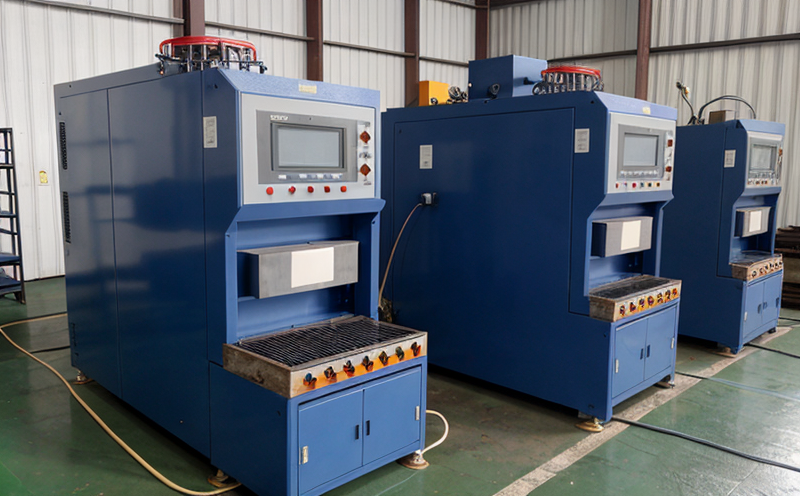EN 10088 Stainless Steel Raw Input Chemical Testing
The EN 10088 standard is a critical framework for ensuring the quality and purity of raw materials used in stainless steel production. This service focuses on the chemical composition analysis of raw inputs, such as alloys, additives, and other components that are essential to the manufacturing process. The primary objective is to ensure compliance with international standards and specifications, thereby maintaining product integrity and reliability.
The testing procedure involves a comprehensive evaluation of elemental content including but not limited to carbon (C), silicon (Si), manganese (Mn), phosphorus (P), sulfur (S), chromium (Cr), nickel (Ni), molybdenum (Mo), nitrogen (N), and any other elements specified in the EN 10088 standard. This ensures that the raw materials meet the stringent requirements set forth for stainless steel production.
Specimen preparation is a meticulous process, involving precise cutting of samples to ensure representative testing. The specimens are then subjected to various analytical techniques such as Inductively Coupled Plasma Optical Emission Spectroscopy (ICPOES), X-ray Fluorescence Spectrometry (XRF), and Gas Chromatography-Mass Spectrometry (GC-MS). These methods provide accurate, reliable, and precise results necessary for compliance with the EN 10088 standard.
The data generated from these tests is meticulously analyzed to ensure that all elements are within acceptable limits as per the specified ranges. Any deviations from these limits could indicate potential issues in the raw material supply chain or production process, necessitating corrective actions to maintain product quality and safety.
Our laboratory adheres strictly to international standards such as EN 10088-5:2014, which defines the methods for chemical composition determination of stainless steel. By following these guidelines, we ensure that our testing results are both accurate and reproducible, providing clients with confidence in their supply chain.
The importance of this test cannot be overstated, especially given the critical role played by raw materials in determining the final properties of stainless steel products. Ensuring compliance not only enhances product quality but also contributes to environmental sustainability by minimizing waste and energy consumption during production processes.
- Precise elemental content ensures consistent performance across all batches.
- Compliance with international standards builds trust within global supply chains.
- Identifies potential issues early, preventing costly rework or failures downstream in the manufacturing process.
- Aids in optimizing production processes for efficiency and cost-effectiveness.
- Supports regulatory compliance, avoiding penalties and reputational damage from non-compliance.
In conclusion, EN 10088 Stainless Steel Raw Input Chemical Testing is a vital step in the quality assurance process. It ensures that raw materials meet stringent specifications, enhancing product reliability and performance while supporting sustainable manufacturing practices.
Why It Matters
The chemical composition of stainless steel directly impacts its mechanical properties, corrosion resistance, and overall performance. Ensuring that the raw materials used in production are free from impurities and contain precise levels of essential elements is crucial for maintaining product quality. Any deviation from these standards can lead to compromised performance, increased maintenance costs, and potential safety hazards.
By adhering to EN 10088-5:2014, manufacturers not only meet industry standards but also demonstrate their commitment to excellence in product development and production. This is particularly important for companies operating internationally, where compliance with local regulations can be complex and challenging.
The integrity of the raw materials used in stainless steel production is paramount. Ensuring that these materials are free from harmful impurities such as phosphorus or sulfur helps to prevent premature degradation of the final product. Additionally, maintaining consistent elemental content ensures that all batches produced under the same conditions exhibit similar properties, contributing to a more predictable and reliable manufacturing process.
Moreover, compliance with international standards like EN 10088-5:2014 fosters trust within global supply chains. When suppliers and buyers can rely on consistent testing results, it becomes easier to establish long-term partnerships based on mutual respect and shared goals. This transparency also helps in maintaining a fair competitive environment where all participants are held accountable for their actions.
Why Choose This Test
1. Compliance with International Standards: Our laboratory strictly adheres to EN 10088-5:2014, ensuring that your raw materials meet the highest quality standards recognized globally.
2. Precise Elemental Analysis: Using advanced analytical techniques like ICPOES and XRF, we provide accurate and reliable results for all specified elements in stainless steel production.
3. Representative Sample Preparation: Our team of experts ensures that each specimen is cut to ensure it represents the entire batch accurately.
4. Timely Reporting: We understand the importance of timely feedback and provide quick turnaround times for your reports, enabling you to make informed decisions promptly.
5. Expertise in Stainless Steel: Our laboratory has extensive experience in testing stainless steel raw materials, providing a wealth of knowledge and expertise tailored specifically to this sector.
6. ISO 17025 Accreditation: As an accredited laboratory, we meet the highest standards for accuracy, precision, and reliability in our tests.





